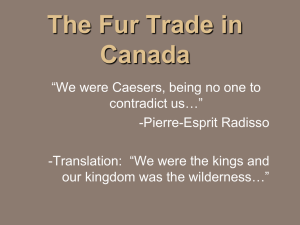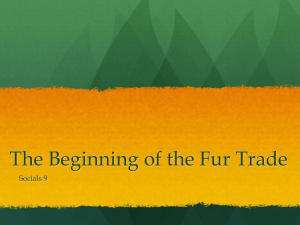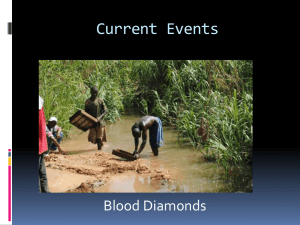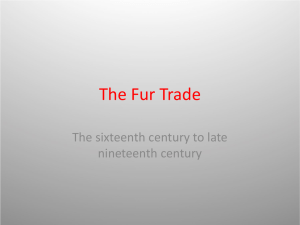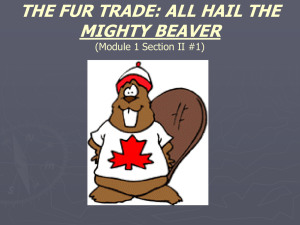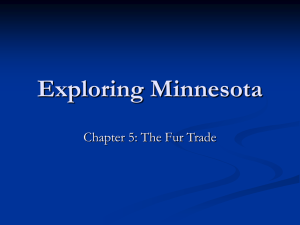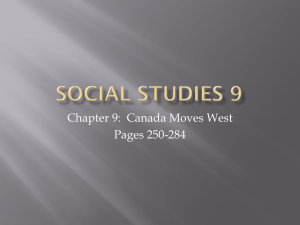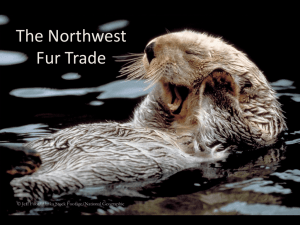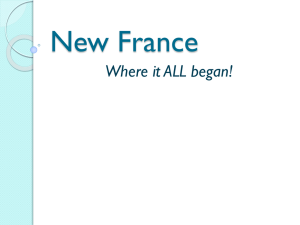Chapter 3 THE BRITISH IN NORTH AMERICA
advertisement
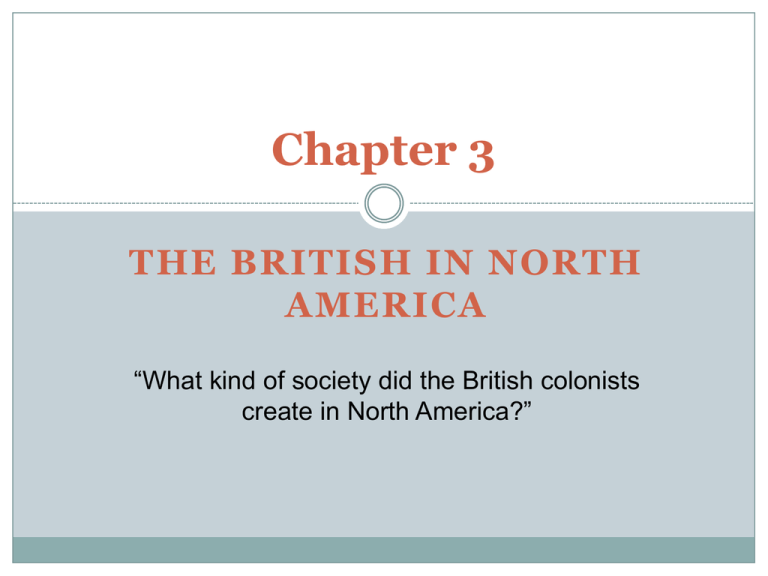
Chapter 3 THE BRITISH IN NORTH AMERICA “What kind of society did the British colonists create in North America?” The British Continue to Explore Definitions Matonabee – A young boy raised at a fur trading post, he knew both the European and Dene ways of life. The Northwest Passage – a sea route through the Arctic Ocean which was sought by explorers for centuries as a possible trade route. Think back... How did the fur traders at the HBC forts get their furs? Think back... How did the fur traders at the HBC forts get their furs? The first nations brought them to the forts. Think back... How did the fur traders at the HBC forts get their furs? The first nations brought them to the forts. The French and British were in competition for furs and the fur trading land. The French started interfering with the British fur trade. Think back... What do you think the French did to interfere with the British fur trade? Think back... What do you think the French did to interfere with the British fur trade? The French began buying the furs off the First Nations trappers before they reached the HBC forts. Because of this, the British would now have to leave the forts to compete with the French and get their own furs. Key Players in British Exploration As we discuss the key players involved in British Exploration, write down important pieces of information about each person in the chart on page 6 in your booklet. Into the Interior: Henry Kelsey Henry Kelsey worked for the HBC. In 1690, he left his trading post and set off on a journey with a group of Cree. His goal was to meet Aboriginal people and convince them to become trading partners with the British. Into the Interior: Henry Kelsey He travelled on foot and by canoe south and west away for Hudson Bay. He was led into the prairies and was the first European to see wild buffalo. How do you think the First Nations reacted to him along his travels? Into the Interior: Henry Kelsey He travelled on foot and by canoe south and west away for Hudson Bay. He was led into the prairies and was the first European to see wild buffalo. How do you think the First Nations reacted to him along his travels? They welcomed him into their territories. Into the Interior: Henry Kelsey Kelsey remained on the prairies for two years, travelling as far west as today’s Saskatchewan. Through his contact with First Nations, he increased the flow of furs from the interior to Hudson Bay posts. West into Alberta: Anthony Henday Anthony Henday travelled even farther west, he also worked for the HBC. In 1745 he set out on foot and travelled as far as today’s Red Deer, AB. He wanted to make contact with the Siksika people who lived there, hoping they would become fur trading allies. West into Alberta: Anthony Henday He was led by a group of Cree guides and arrived at a Siksika village. The chief offered to share a pipe of tobacco with Henday and they feasted on pieces of buffalo meat. The Siksika did not agree to trade with the British because they were not used to an economy based on profit. To the Northern lands: Samuel Hearne The Dene people living in the Far North told the British stories about gold and copper along the shores of a distant northern river. In 1770, a sailor named Samuel Hearne set out from Hudson Bay to find this river. He joined a party of Dene and their leader Matonabee. To the Northern lands: Samuel Hearne They set out on snowshoe hauling supplies on toboggans. In the spring when the snow melted, they made bark canoes to carry them across rivers and lakes. Hearne did not find gold or copper but he did reach the shores of the Arctic Ocean. He also learned how to travel and live off the land. Matonabee As a young boy, Matonabee was raised at a fur trading post, so he knew both the European and Dene ways of life. He was a skilled diplomat who spoke three languages. His leadership made Samuel Hearne’s expedition successful. He knew the route to the Arctic Ocean and showed Hearne how to travel light and live off the land. Matonabee He was a successful fur trader. He and his people collected furs from groups as far north as the Mackenzie River and brought them to HBC trading posts. He was a close ally of the British at the HBC trading posts. In 1782, the French attacked Fort Prince of Wales (his home fort) and a smallpox outbreak killed most of his people. In despair he killed himself. Exploring the Pacific: James Cook Most efforts to find the Northwest Passage began at the Atlantic coast. However, the British looked from the Pacific coast, too. In 1778, James Cook sailed into a harbour on Vancouver Island. He was welcomed by the Nuuchah-nulth. Exploring the Pacific: James Cook Do you think he was successful in finding this route? Exploring the Pacific: James Cook Do you think he was successful in finding this route? Cook failed to find the route he was looking for. He set sail across the Pacific Ocean for Asia with a ship full of animal skins. What kind of skins did he have with him? Exploring the Pacific: James Cook Sea otter skins! These pelts ended up being very valuable in Asia. When word spread, fur traders rushed to the Pacific Coast. British Foundations of Canada The British played a key role in the exploration and colonization of North America. They build colonies and benefited from the natural resources here. They travelled through the interior and along the coasts of North America. As they travelled, they made contact with many First Nations. On the Atlantic coast, the British built the first English-speaking communities in what would become Canada. Questions A) The British Continue to Explore (pg 67-92) 7. How did the French interfere with the British fur trade? (1 pt)


